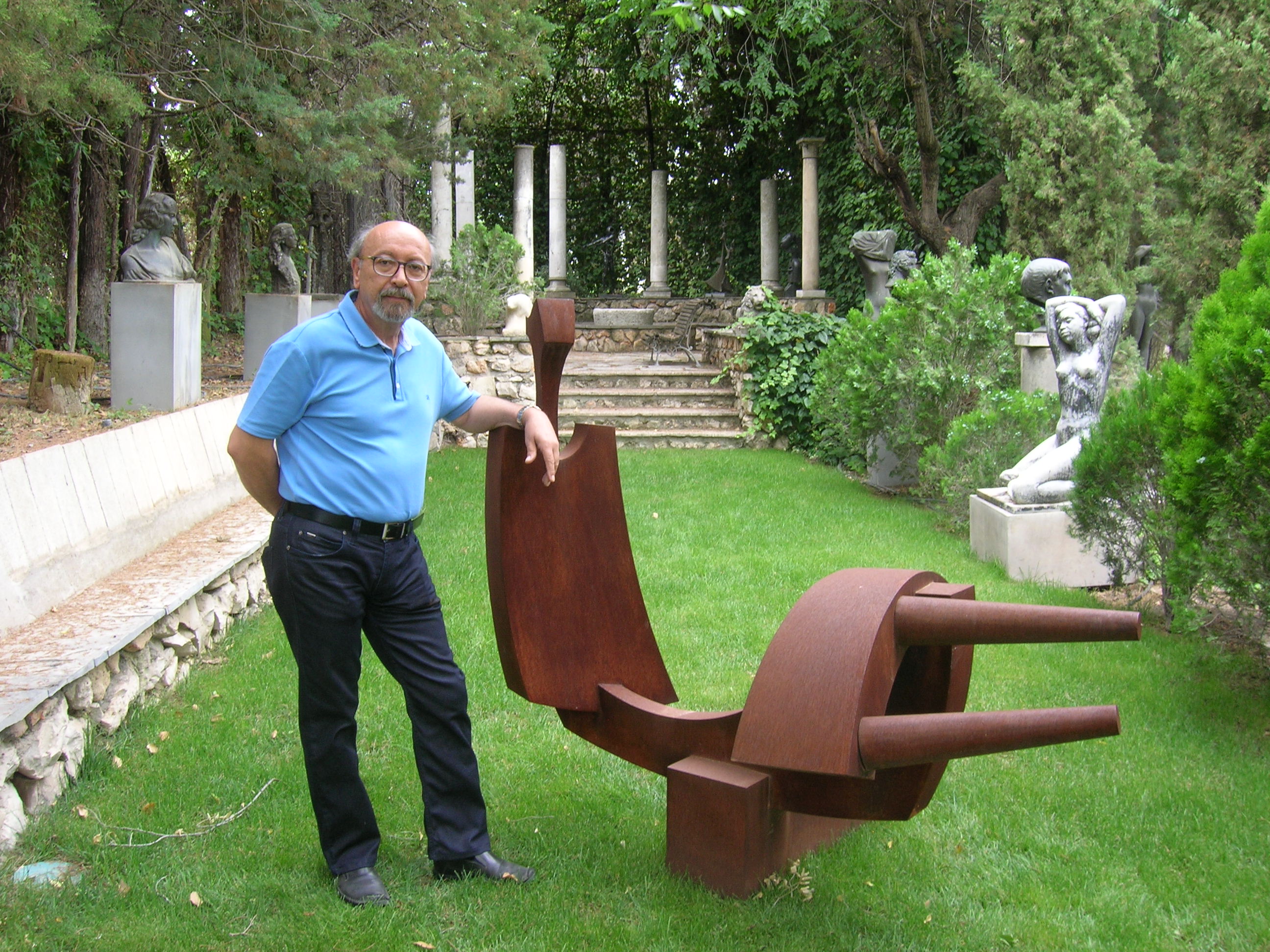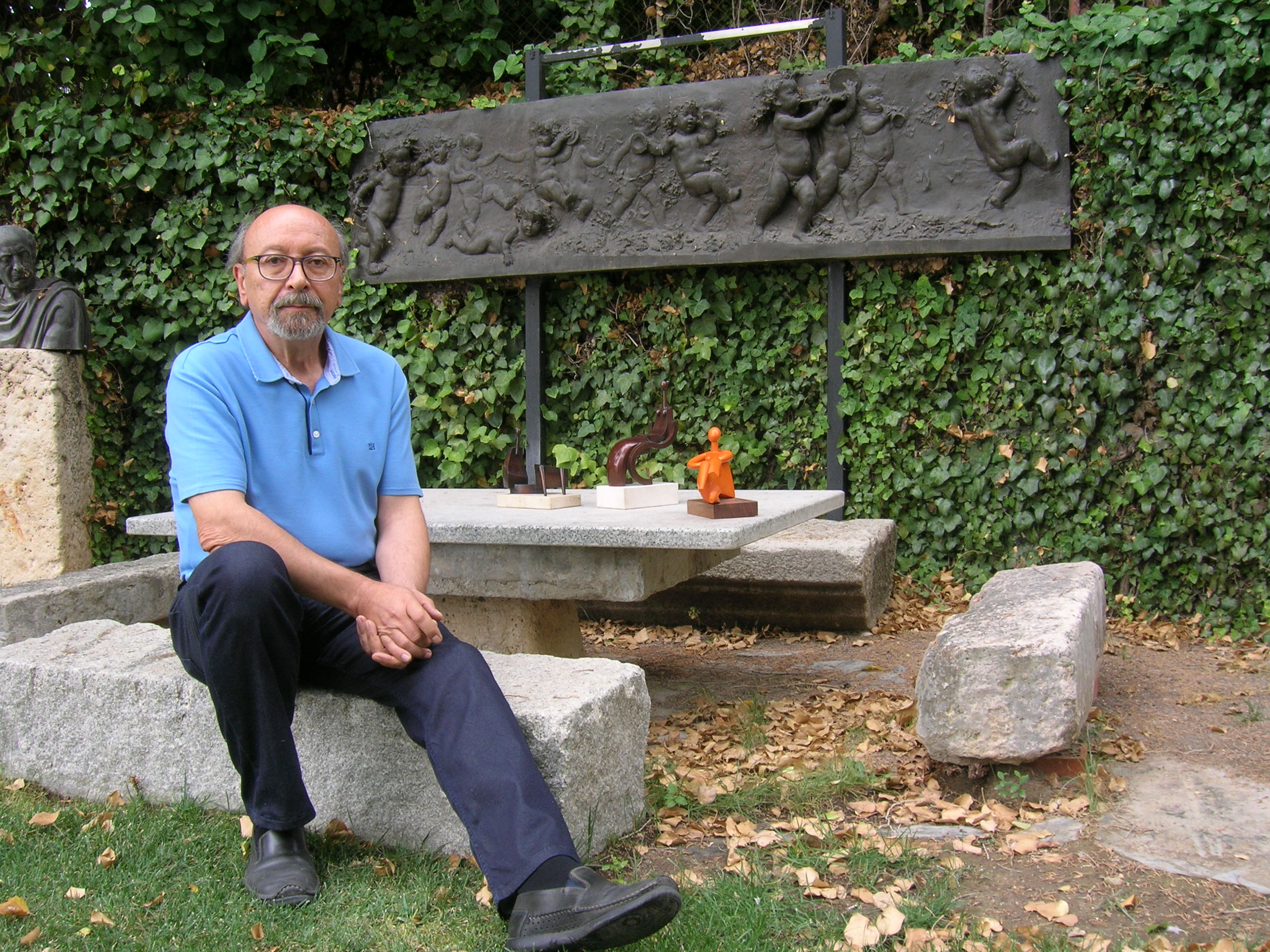Manuel Mateo
If what's on the "walkway" Arc is art, I'd rather call myself a doer of thingsBy: Fátima Ruiz
He forms his words with the same and care for perfection with which he signs his works. Manuel Mateo (La Peraleja, Cuenca, 1951) is one of the most representative figures of the contemporary word in the country and a trade he knew from the very heart of the Casting Layer by the hand of the "master", as he affectionately calls Eduardo Capa. With an artistically incorrect, sincere and revealing honesty, he brings us closer to his staff and delicate creation from the garden of the Capa Foundation in Arganda del Rey.
After decades of work and recognition of his work, what has changed in his personal concept of sculpture?
The concept essence in sculpture has not changed. They have changed the shapes, the ways of making and the adaptation of the sculpture to some materials. I remember when I started, like every person who starts that, to be influenced by their teachers, which is a logical and even healthy thing. But with all this knowledge knowledge knowledge comes a time when you have to stand and sift and keep what you want to start your journey, and separate – not give up – that from the work of others. This is a process that took me several years, because it is not easy to get away from everything that has received so much over time, but in the end it is worth it because it is on the site, your way of doing and, in a definitive , make it yours.
When someone approaches one of your creations what can you see?
Technology has not yet deepened, it has not come to know what goes through a person's mind when he sees a work. I would like you to see that it is a neat work, a work made above all with great respect for the viewer (which I think is now being lost) and I think it is a work without folds.
When did your relationship with Sculpture Layer begin?
I started meeting the Capa family back in 1966/1967. For the first time we approached a group of students of the School invited by The master Capa and since then there has been that cordial relationship, because in this house there has always been a dish for which I wanted, a bed for which I needed it and, of course, always a good advice of the person who for me more knew of modern and contemporary art and specifically of the sculpture that was master Capa. I must admit that it was a person who helped me a lot, both to get around sculpture and economically. I remember I had a run of hardship and, one day, on the corner of the Cibeles with the Army Ministry, I was going with your son Eduardo, and he says, "Man, where are you going?!" "I'm going to get a job, " I said. "How, you don't have a job?! I want you at the foundry tomorrow." And that's where I left, but as a laborer. I had my salary, my schedule, and that gave me the opportunity to get out of the quail and in addition to learning everything that is the casting process. There are people who send the sculpture by an agency, return it to an agency, and do not know what process it has followed. To me, I think it's very sad.
What is the weight of foundry in the production of a sculptor?
That logically depends on each one. I understand I'm a little special about finishing. Not for nothing, because it is a pejigueras, but because in the type of sculpture that I make the volume and the line are very pure volumes and lines, where I want perfection, that a line does not break, that a volume is in place... In that sense and that is why I merge in Capa, because I believe it is a foundry that has always satisfied the desires of what I wanted for my work. I prefer to pay something else – because the quality is paid – and offer the viewer that respect, a sculpture as I want to see it.
Tell us about your small-format works...
When we refer to the small format work we are referring to 90% of my work. Unfortunately, economically I have not been able to afford – except five or six monuments that I have had the opportunity to do – to melt everything I want. However, the small-format work should not be confused with a minor work. It can have as much grandiosity or just like a big one.
Where do new trends in the artistic field take us?
He's going to let me answer with an anecdote. Years ago (it would be the third or fourth edition of ARCO), a gallerist from a rather famous gallery proposed to me that if I made a type of sculpture – I remember the words – "of which it now takes away" I would be in ARCO. Of course, I wasn't at ARCO, I'm not in ARCO, nor will I be in ARCO. My sculpture is probably not the best in the world, but it is the one I believe in, the one that amuses me and i have a good time with. If to be in ARCO I have to give up all that, that's what other people are for. And, of course, in sight there are. Today's art – encouraged by many gallerists and many critics – I compare it to the naked king's tale. As we all know, anyone who didn't see how pretty his suit was was was a fool. I think that's what I answer your question, there's no need to clarify any more.
What is the value of art?
For me, it's what everyone feels about art. Surely my assessment differs from someone else's. When they ask me what it would be like if I wasn't a sculptor, it's that I didn't think about it. What I do I think is art. In comparison, if what's on the ARCO catwalk is art, I prefer to call myself just a doer. If painting a mole bidet or looking for pallets is art, then I remove the sculptor thing. But for me art is what everyone should have the ability to feel. That is, one will be moved by a feeling of rejection, to another of joy, to another sublime, but, in general, Art is as fundamental in the person as the knowledge of other subjects. It's the expression of feeling.
More about Manuel Mateo Cuenca's biography, his works and awards here






